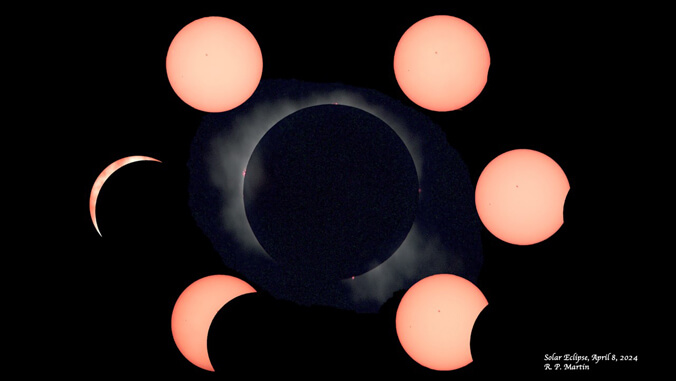
Pierre Martin, an associate professor of physics and astronomy at the University of Hawaiʻi at Hilo, vividly describes the moment when the skies over Texas transformed during the total solar eclipse on April 8.
“It got really dark, cooler, and the birds all stopped singing. After this, the sky got very cloudy,” Pierre said.

Martin was one of the millions of people in Texas who marveled at the celestial phenomenon. It was one of 15 states in the path of totality, stretching from the Lone Star State to Maine.
Accompanied by his wife, Martin flew to Texas to witness the historic event near Fredericksburg, where his in-laws reside. However, their anticipation was met with a twist of unfavorable weather as thick clouds rolled in just an hour before the eclipse.
“I feared that we would not see the magical moment of totality,” said Martin. “But, we got a little bit of luck! For about 20 seconds, we got an opening in the clouds, and we could see the black disk of the Sun, surrounded by its corona and red prominences, and the planet Venus nearby. It was absolutely stunning.”
Celestial connection

Martin, who also co-chairs the astronomy and physics department at UH Hilo and directs the university’s educational observatory managed to capture several remarkable photos, including some during totality using a zoom lens equipped with a solar filter.
“I was seven years old during my last total solar eclipse in Canada, so I did not remember much,” he said. “This one, I was really choked up and I will remember it forever. Moreover [because] I was able to share the moment with my wife and her family.”
Looking ahead, Martin is already contemplating traveling to Spain for the next total solar eclipse in 2026.
For more go to UH Hilo Stories.
—Susan Enright

